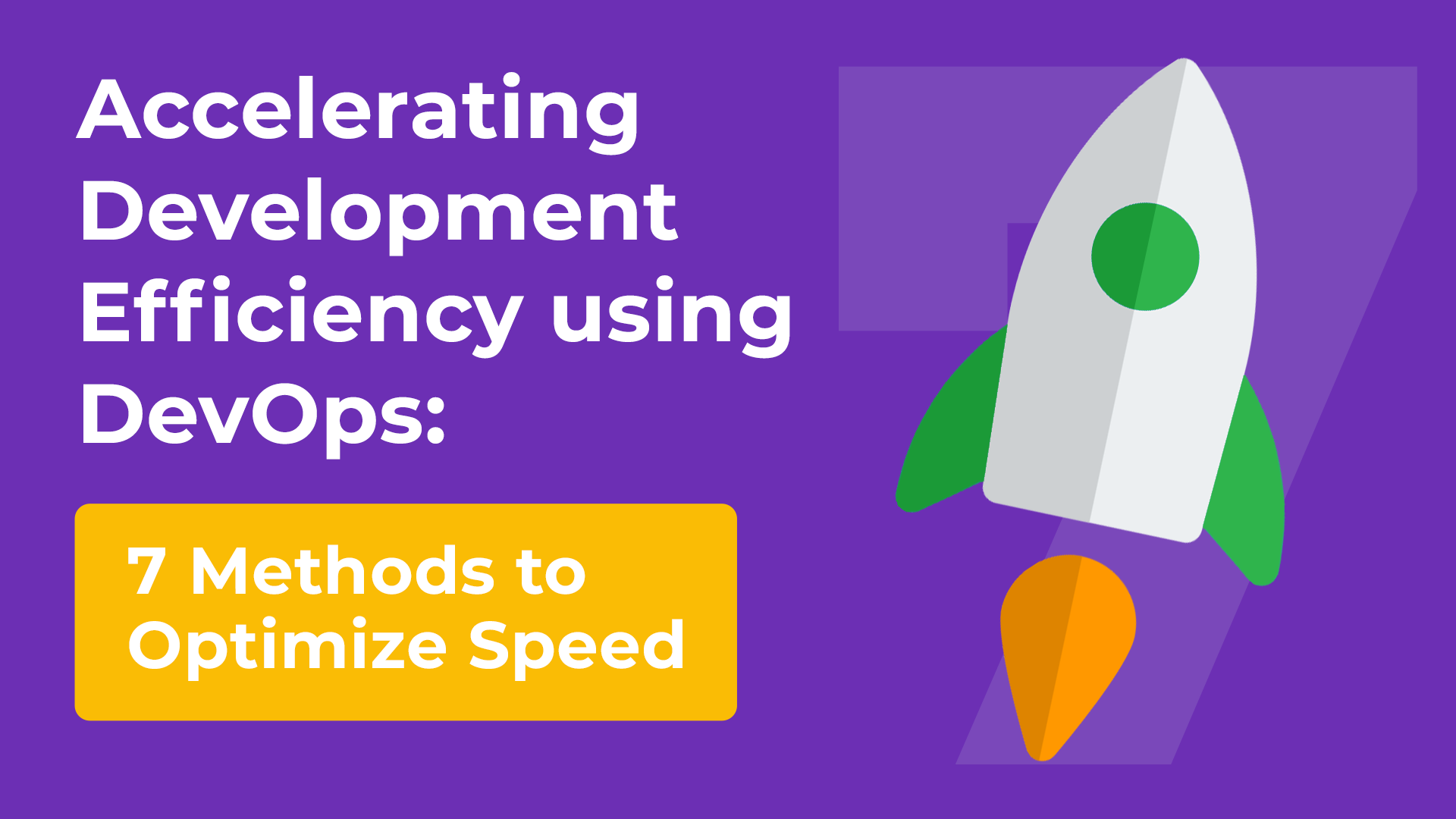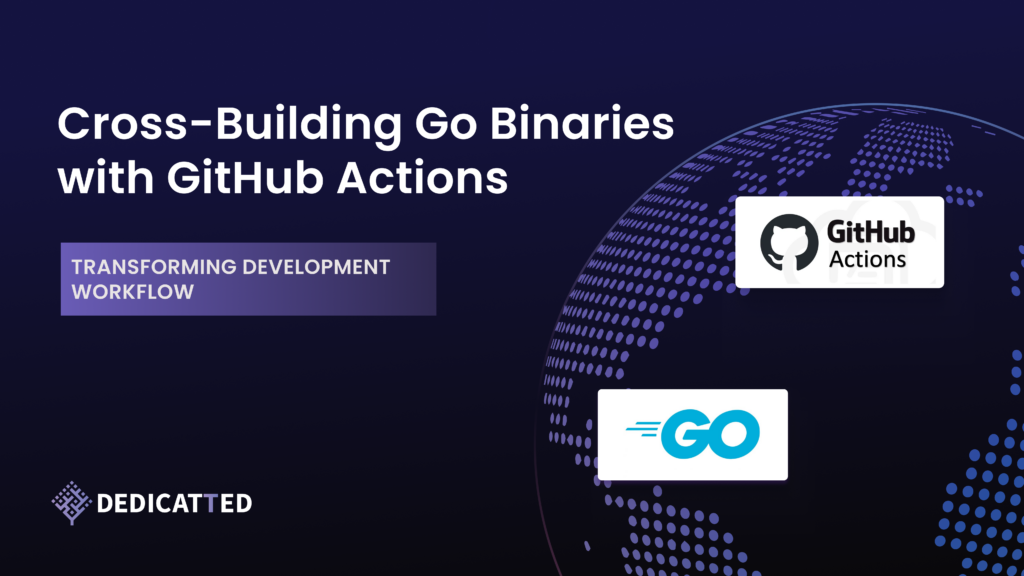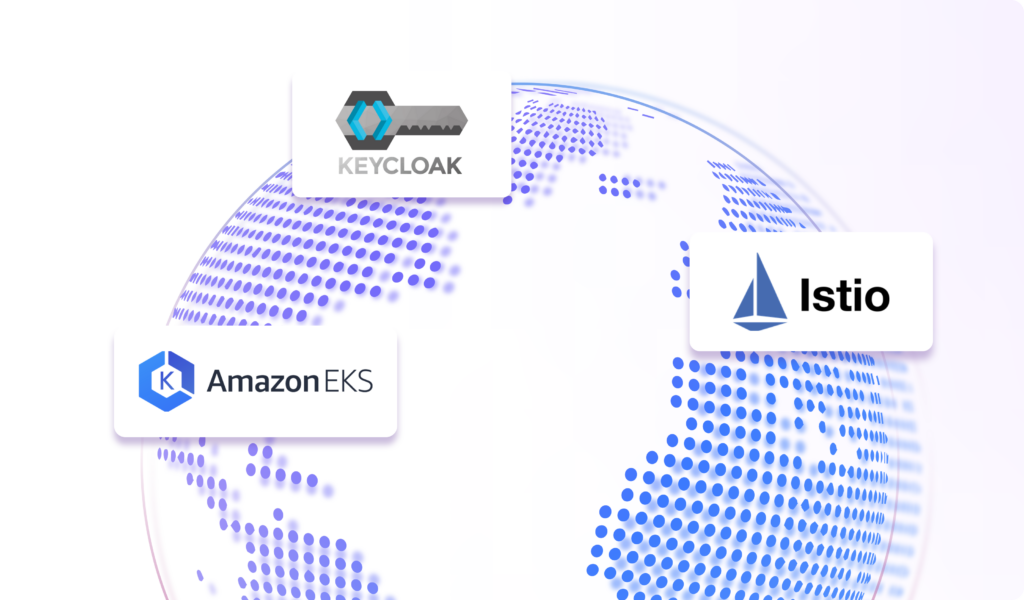Accelerating Development Efficiency using DevOps: 7 Methods to Optimize Speed
18.04.2023
5 minues

DevOps methodology integrates software operations and development to establish a more reliable and efficient software development process. Its primary objective is to hasten software delivery and deployment while reducing errors and maximizing automation. DevOps has emerged as an indispensable element of modern software development, enabling teams to expedite development cycles, hasten software deployment, and enhance overall quality. In this article, we’ll explore seven techniques to leverage DevOps for accelerating development.
However, what comes next after implementing CI/CD? Here are seven valuable practices that can expedite the development and prove beneficial
1. Agile Development Environment
To ensure a consistent environment and eliminate the need for developers to create their own environment, a complete replica of the production environment, albeit on a smaller scale, must be created for each Pull Request. This replica should have its own domain name, database, and all necessary dependencies. This approach addresses the age-old issue of “working locally.”
The engineering workflow involves outlining a series of steps to generate a unique copy of the namespace in Kubernetes, installing the application with a chart (which is typically maintained in the same repository), and optionally configuring it with parameters in the Jenkinsfile for generating a Pull Request.
The developer is provided with a DNS name, a unique namespace, and the ability to initiate redeployment.
Accelerating development can have a significant impact depending on the current infrastructure (such as a local environment that is unique to the entire team or a single server for the team that crashes frequently, among other factors).
2. Automatic Scaling
In 2023, it is recommended to incorporate autoscaling into the service during the design phase and implement it by default without any exceptions. The service should offer simple parallelization capabilities, graceful shutdown, and useful logs. It is also important to set up resource restrictions and requests.
It is necessary to isolate and automatically scale each service that is more or less resource-intensive. For example, AWS EKS provides a Cluster Autoscaler that adds the required number of nodes to the Autoscaling Group if the number of pods doesn’t fit in the node pool.
Automatic scaling of services becomes more efficient when it’s event-driven, rather than by CPU load plus HPA. Using HPA to add one pod instance at a time could lead to delays, especially when there is a significant increase in load. In such cases, it is recommended to scale the node pool and create as many pods as possible to complete all tasks within a reasonable time frame. For instance, KEDA offers event-driven autoscaling to achieve this.
Overall, it is important to ensure that autoscaling is implemented efficiently in the service and takes into account various factors such as resource restrictions, graceful shutdown, and event-driven scaling.
“Auto-scaling in Kubernetes based on events.”
To implement engineering best practices, include the ScaledObject manifest and specify the Amazon SQS queue in the parameter. In the chart, set the scale factor for the application and name the deployment that will be scaled.
KEDA offers various scalability options, including Prometheus, Redis, Azure, and Cloudwatch. However, the external scaler is especially interesting. Refer to the documentation for a list of available scalers.
The resulting microservice architecture enables faster task completion, eliminates the need for manual scaling, and prevents data loss during SIGTERM processing. By treating containers as a herd instead of a single point of failure, we avoid wasting time on futile searches for flaws in static deployments or manual scaling
3. Usage limits
To prevent application overload, scaling, and rate restrictions must be used in tandem.
According to the Theory of Constraints, there will always be a bottleneck, whether it’s a database, slow object storage, or something else. Our goal is to scale the application to this limit and return a 429 Too Many Requests error to users. This is preferable to a system crash or slow operation, especially in the case of a database.
However, clients must implement the Circuit Breaker pattern, which can cause timeouts between requests to exponentially increase.
To address this, Istio should be added to the stack, and the Local Rate Limit and sidecar in the pod should be utilized. This provides us with excellent real-time analytics for status codes, latency, and future tracing.
By protecting the service from overload, developers can save time on troubleshooting and focus on more precise planning, since they are aware of the system’s constraints.
4. Flow of Kubernetes
In the world of machine learning, time is of the essence. If your machine learning trials take months while your competitors take only hours, you’re at a disadvantage. Given that data is the new gold, training should not take too long. Fortunately, with distributed training, you can run workloads across a large number of servers while KubeFlow scales and manages pipelines.
The most recent KubeCon + CloudNativeCon demonstrated that running ML workloads on KubeFlow is the optimal choice. Although installation and configuration can be challenging (including the cost of building kfctl + ArgoCD), the benefits are well worth it. With this solution, an ML engineer can save hundreds of hours of work.
5. App dependencies
Bundling application dependencies with infrastructure can be a helpful practice when creating a dynamic development environment or when developers are involved in infrastructure tasks. This is especially useful for automating routine client tasks, and I’ve created a manifest that works well for everyone.
To implement this technique, you may need to choose GitOps for the infrastructure, depending on your cloud provider. While we wouldn’t yet use AWS Controllers for Kubernetes at Amazon, there is an excellent implementation from CNCF called CrossPlane that works perfectly for GCP.
The key is to deploy the application along with small pieces of infrastructure (such as S3 buckets and SQS queues) that can be described in YAML. The controller will then adopt the changes and build the necessary infrastructure. Deletion also works smoothly; upon the “PR merge” event, the namespace, infrastructure manifests, and related resources are all destroyed by the controller.
For dynamic environments, it’s common practice to add small pieces to the helm chart or let clients develop the infrastructure components themselves. When a client makes a modification, it’s evaluated and a temporary S3 bucket is created. This allows developers to address issues with a regular PR, rather than waiting for DevOps to handle infrastructure changes.
6. Sharing of Knowledge
DevOps revolves around effective communication. Therefore, we host frequent talks and gatherings to explain the functionality of our infrastructure and monitoring systems, the benefits they offer, and how they can be leveraged.
Transparency is key. The more tailored and innovative our engineering approaches are, the greater the likelihood of achieving a competitive edge and market leadership.
We recommend hosting “How Infrastructure Works” events for anyone who is interested in learning more about our suggested strategies and observing how they are being implemented. Simply providing a link to Grafana is insufficient; it is important to demonstrate how to connect the Prometheus SDK to an application, create graphs, or configure Slack alerts for effective communication.
It’s important to respond promptly and acknowledge the issue, even if it’s already been reported by someone else. You can simply say, “Thank you for bringing this to our attention. We are aware of the issue and are actively working to resolve it,” whether it was detected by the monitoring system or reported by a member of your team.
Components of the Kube-Prometheus-Stack
One straightforward option is to use “the helm install prometheus-community/kube-prometheus-stack” command. This will provide a basic set of metrics, graphs, and alerts that can cover around 80% of issues in the Kubernetes cluster, including common cases such as disk clogging, task restarts, and task kills.
To ensure long-term storage, metrics for apps should be described in the OTEL format, and alerts and displays should be implemented using infrastructure as code.
With this approach, you can establish a monitoring system that can anticipate potential issues, provide insights into the current system performance, and significantly reduce debugging time. This will also help preserve your team’s nerves, budget, and public image in case of production-related incidents.
In real-world scenarios, a DevOps team’s contributions go beyond just CI/CD and can significantly impact the business. Share this post with your DevOps team or bring it to your architect’s attention if you feel your team is falling behind.
By implementing at least one of the techniques discussed in this article, any team and organization can accelerate their development pipeline, improve product quality, and achieve a time-to-market improvement ranging from 1% to an indefinite percentage.
At dedicatted, we already use the latest version of Kubernetes for our leading clients. Please contact us for more information.













